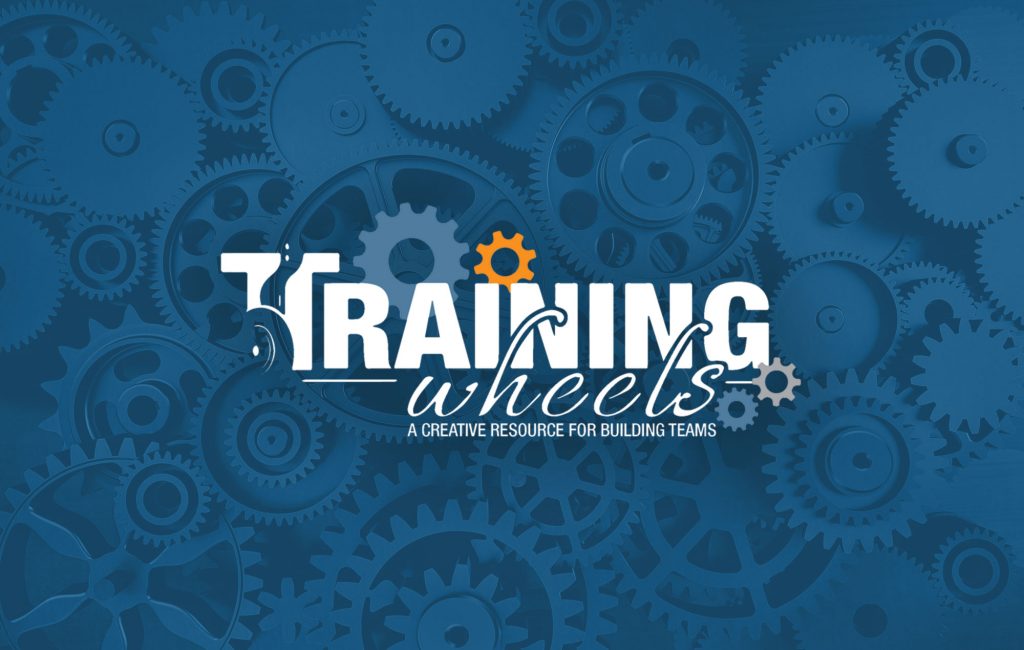
52 Card Pick Up
Recently someone asked me what my current favorite Icebreaker activity is. I have so many ‘favorites’ that it is hard to pick just one! One of my favorite icebreakers that has some ‘meat’ to it has to be 52 Card Pick Up. Now, this is not the same game your older sibling played with you when you were a kid. You know the one, where your older brother says, “Hey Michelle, you wanna play a game?” (and being the game-lovin type you enthusiastically say, ‘YES!’, and then he throws the cards in your face and says… ’52 card pick up’…) (Not an awesome game.) The re-designed version of 52 Card Pick Up is designed to surface behaviors that the group experiences on a regular basis in a fun way.
Before I get into the why it’s my favorite, here’s the basic rules for the game:
52 Card Pick Up (This game included in our Stack the Deck Cards)
You need a deck of playing cards with specific ‘jobs’ written on them. Preferably the jobs are written or printed on the back side of the playing card, not the side with the number and suit. We created a specialized deck of cards called Stack the Deck Cards that include this game. You need one deck of cards for every 10 players. Place all 52 cards with the playing card side face up on the floor or table top. You will need lots of space for participants to move around and perform various tasks. Here’s how I set the game up:
“The next game we are going to pay is called 52 Card Pick Up. (wait for the groan…) How many of you remember this game as a kid? Not such a fun game, right? Well I’m happy to report that the rules have changed for that age-old game. Here are the new rules for 52 Card Pick Up. You can see that there is a full deck of cards scattered about here on the floor. On the other side of these cards there is a ‘job’ that you have to do. In a minute when we start the game, each person will come forward and pick up a card and read the job on the back side of the card that needs to be completed. Whatever is written on that card is for your eyes only. You cannot show your card to other participants, and you may not tell others what your job is. Some of the jobs can be done all by yourself. Other jobs may need assistance from others on your team, however you can’t tell anyone what you are doing. As soon as you have finished your job to the best of your ability within the confines of this room, you may pick up another card and move onto the next job. The game is over when your team has picked up and completed all 52 jobs in the deck. Now, because I’m a big believer in Challenge By Choice, if you pick up a job and it pushes you a little too far outside of your comfort zone, you may put that job back down. But recognize that someone on your team will have to complete that job because the name of the game is 52 Card Pick Up, not 51 Card Pick Up. Are there any questions? (pause) Let’s begin!”
Once you begin the game and participants start performing their first few jobs, immediate chaos and insanity ensue. Here are a few examples of the jobs written on the cards:
Make a really loud noise until someone tells you to stop.
Stand really close to someone until they tell you to go away.
Shake for 60 seconds.
Lightly punch 5 people in the arm and grunt when you do it.
Tell 5 people what you think about what they are doing.
Do 15.3 Jumping Jacks.
Get everyone to sit on the floor and be quiet for 1 minute.
Do a log roll, but don’t be obvious.
So you can see, if 8 different people are doing these 8 different jobs all at the same time, it will be chaotic (not to mention pretty darn funny!), and there are 52 different jobs like this! Some of the jobs themselves will definitely conflict with one another, which makes for conflicting needs of our participants. For example, if you have the card ‘Make a loud noise until someone tells you to stop.’ And one of your teammates has the card ‘Get everyone to sit on the floor and be quiet for 1 minute.’, there is a conflict of interest. Some participants find themselves having to put their own job on hold in order to help another team member out. (can you relate?) Or let’s say you were so busy ‘standing really close to someone until they tell you to go away’ that you didn’t even notice the person ‘shaking for 60 seconds.’ Were you so busy doing your job that you completely missed the other things that were going on? What if this person was having an epileptic seizure only 5 feet away from you and you were too busy to notice?
The reason why this activity is one of my favorites, is that you can pick and choose the behaviors you want to debrief after the activity is over. As soon as a group is finished, I ask them to sit on the floor (or in chairs) and ask them to go around the circle and tell the group what some of the ‘covert’ operations were that they had to do during the game. These are silly in nature, but there are many debriefing points you can relate to real life. Many participants will be surprised at all of the things that happened that they did not even see!
From a debriefing point of view, the process of letting them share what their jobs were takes care of the first phase of debriefing, the ‘What Happened’ phase. (See a recent newsletter article on What, So What, Now What.) Once the group has had a chance to giggle and review what some of their jobs were, that’s when I step in and start asking questions about ‘Why this is important. and, How does this relate back to the real world?’ Depending on the specific outcomes and needs of the group, this is where I talk about specific behaviors that came up in the different jobs they performed, and how they relate to this specific group.
How is this activity like everyday life?
How are the behaviors demonstrated in this activity like interacting in a group setting?
Each behavior demonstrated in this activity could relate to a behavior in the real world. Which ones do you think pop up in your day to day?
How many of you were surprised to hear some of the jobs that were done? Why do you think you missed them?
Do you ever have to put your own needs on hold in order to help out another person? Give an example.
In this game, there were a lot of quirky behaviors that came up. As humans, we all have our little quirks. We don’t always get to choose who we have on our teams or who is in our group. Effective teams figure out how to work with the quirk! They also address behaviors that come up that might negatively effect the group.
After I have finished with a few initial questions, I then let the group do a small group debrief. Now that they have new information to process, and realize that this is so much more than a silly icebreaker game, it’s good to give them a little time to process how this relates back to the real world. After about 5 minutes of small group process, I then open it back up and ask them to explain different ways they see this relating back to the real world.
So you can see why it’s one of my favorites! There is so much good meat to this activity, which also happens to be really fun to participate in as well. Give it a try and let me know how you like it!
Enjoy!
Have fun out there,
Michelle Cummings
Owner/Trainer/Big Wheel
Training Wheels
www.training-wheels.com

Founder / Facilitator / Big Wheel of Training Wheels